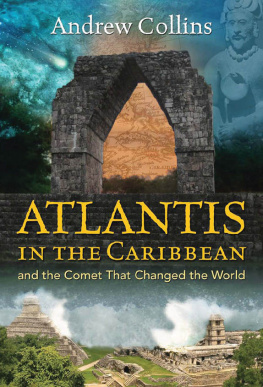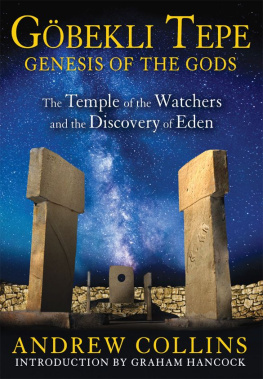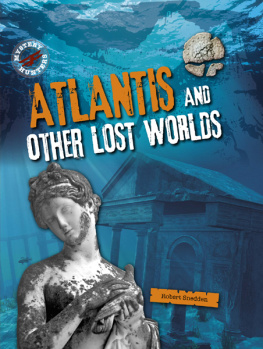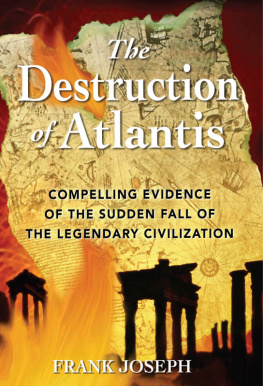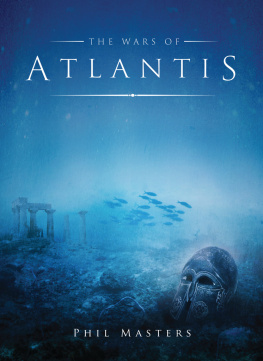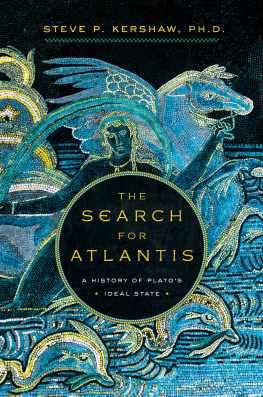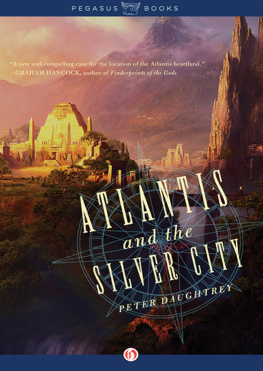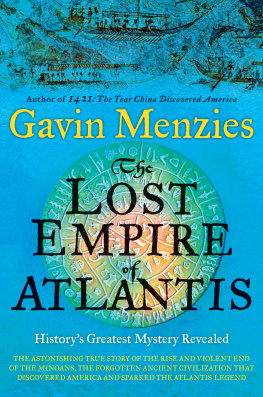
For Han Kloosterman,
who found undeniable proof of the cataclysm
that destroyed Atlantis,
and
Graham Phillips,
for encouraging me to go through the
gateway to Atlantis
ATLANTIS
IN THE CARIBBEAN
Collins produces a tantalizing pattern of oral and written evidence that Atlantis not only existed but probably was destroyed by a comet some 13,000 years ago.
BOSTON HERALD
Collins proves an engaging conductor of an exegetical tour of Platos writings about a civilization in the Western Ocean that vanished when a natural catastrophe befell its homeland. His book [will] enamor imaginations sparked by the legend of lost Atlantis.
BOOKLIST
A bold and imaginative attempt to understand the destruction of the legendary city of Atlantis, the creation of Mesoamerican civilization, and the end of the last Ice Age.
KIRKUS REVIEWS
Praise for Previous Works by Andrew Collins
Gbekli Tepe: Genesis of the Gods by Andrew Collins is a comprehensive interpretation of the oldest advanced temple complex on Earth. World-renowned for his explorations of the prehistoric Middle East, Collins weaves together archaeological, anthropological, astronomical, and spiritual aspects of Gbekli Tepe. This clear and correct interpretation of Gbekli Tepe offers even more! He draws our minds back 17,000 years to the Solutrean phase to describe human cultural development before the cultural regression. Gbekli Tepe awakens ancient memory to process deeply hidden trauma from the past because it is a faithful and accurate depiction of the Paleolithic advanced culture. A must-read for anybody who wants to know the real story before history began.
BARBARA HAND CLOW, AUTHOR OF AWAKENING THE PLANETARY MIND: BEYOND THE TRAUMA OF THE PAST TO A NEW ERA OF CREATIVITY [PREVIOUSLY RELEASED AS CATASTROPHOBIA: THE TRUTH BEHIND EARTH CHANGES]
Andrew Collinss From the Ashes of Angels is one of those books that comes along only once or twice a decade. Suddenly a whole new realm is opened up to us as we are invited on a hunt for our lost origins led by a voice that speaks clearly and forcefully. It is the kind of book that you can read and then read again and again and each time you will be rewarded. Andrew Collins is one of the key thinkers of a whole new generation of writers that have decided that the human past is much more interesting than we have all been led to believe.
RAND FLEM-ATH, COAUTHOR OF ATLANTIS BENEATH THE ICE
Keenly sensing the challenge of what remains to be learned, Collins does not visit old ruts. Time and time again, he reaches beyond the known and pushes the envelope of inquiry, as is seen in Gods of Eden. The perspectives he is developing can contribute crucially to our common task of direction-finding in the uncertain future.
JOHN LASH, ASTROLOGER, MYTHOLOGIST, AND AUTHOR OF QUEST FOR THE ZODIAC
CONTENTS
ACKNOWLEDGMENTS
M any thanks to all those who helped create this work. There are many, but those who should be mentioned in this new revised edition are Debbie Benstead-Cartwright, Karen Deeley, Bill Donato, Catherine Hale, Rodney and Joan Hale, Johan Kloosterman, Maria Smith, Graham Phillips, Brent and Joan Raynes, David Southwell, Richard Ward, Jon Graham, and all the staff at Inner Traditions. A special thanks goes out to Greg and Lora Little for their constant support and for allowing me to continue my voyage of discovery in the Bahamas and Caribbean.
PHOTO CREDITS
The author and publisher would like to thank those listed below for permission to use the following pictures included as numbered plates: 1. Stanze di Raffaello, Vatican/Scala, Florence; 4. Museo Pio Clementino, Vatican/Scala, Florence; 5. Sygma; 8. Cyrus H. Gordon; 10, 11, 12, 13, and 23. David Eccott; 15. Park and Roche Establishment Archives, Schaan; 17 and 18. Trustees of the British Museum; 19. Topkapi Museum, Istanbul; 22. Museo Nacional de Historia, Madrid; 27. Fondo de Cultura Econmica from Historica Tolteca-Chichimeca; 28. Estrella Rey and Ernesto E. Tabo; 32. Essex and Suffolk Water; 35. John W. White; 36, 40, and 41. Anna Valentine; 38. Joan Zink; 39. Ava Rebikoff; 42. William M. Donato; 43. Herb Sawinski; 44. Dee Truman; 45 and 46. Lora Little.
The author would also like to thank Karen Deeley for the following line illustrations: Bimini Road, God L, and Quetzalcoatl; Rodney Hale for map texts; and Chris Ollis and Ruby for the Atlantis ground plan.
PREFACE TO THE NEW EDITION
CLUE TO THE GREAT CATASTROPHE
T he date is September 29, 2014. It is beginning to rain as I cross a sparse, sandy wasteland under threat of commercial development. I am in Lommel, Belgium, close to the border with the Netherlands. With me is a TV camera crew, a local archaeologist, and an elderly gentleman in his eighties. He is wheelchair bound, partially deaf, and can barely speak due to the scars left behind by throat cancer twenty years earlier. Yet Johan (Han) Kloosterman, a Dutch geologist and mineralogist, has no intention of giving up on life any time soon. He is one of the worlds acknowledged experts on what has become known as the Younger Dryas Boundary impact event, which, as we shall see, now becomes the most likely mechanism behind the destruction of Atlantis. His sheer determination to continue to learn, and deliver his findings to those who will listen, makes him one of the most inspirational people I am ever likely to meet in my life.
The Younger Dryas impact event is thought to have occurred approximately 12,800 years ago. At this time, scientists now believe, a comet appeared in the night sky, most likely entering the firmament somewhere in the vicinity of the Pleiades constellation (see chapter 20). After passing through the inner solar system this heavenly harbinger most likely entered perihelion, its close approach to the sun. All the indications are that, like Icarus in Greek mythology, it came too close to the solar orb. This caused its breakup into a freight train of fragments, some as much as a kilometer in size. These fiery projectiles, some of them hundreds of times more powerful than the largest nuclear bomb ever detonated, were sent on a collision course with the Earth.
Here, on the surface of the planet, the Upper Paleolithic populations in the American Northwest would have had a rude awakening that day, as multiple fragments of the comet entered into low orbit. Contact with the atmosphere would have caused these intensely bright fireballs to break up still further, many splitting apart and exploding as terrifying air blasts even before they reached the ground.
The result of this torrent of impacts, which carved a path of destruction across the North American continent, and beyond as far as the Atlantic Ocean and Eurasian landmass, would have triggered uncontrollable wildfires consuming everything in their path in a mass conflagration. As the fires raged, great volumes of toxic smoke and burned debris would have risen into the upper atmosphere, very rapidly creating a thick black layer, blotting out the sun and moon for an extended period of time. How long exactly, no one knows.
Some large fragments of the comet crashed into the North American ice sheets, instantly vaporizing the water locked within. This resulted in torrential rain full of toxic chemicals that would have continued for weeks on end, flooding many areas of the planet. In addition to this, torrents of water freed up from the ice sheets would have torn through the hills and valleys, consuming everything in their path and changing the face of the landscape forever. The final outpouring of this melt water into the oceans would have risen the sea level almost immediately, drowning low-lying regions of the planet in just a matter of weeks.
Next page
